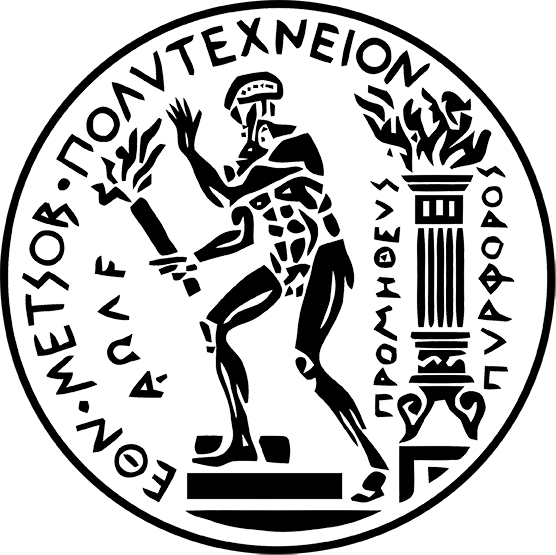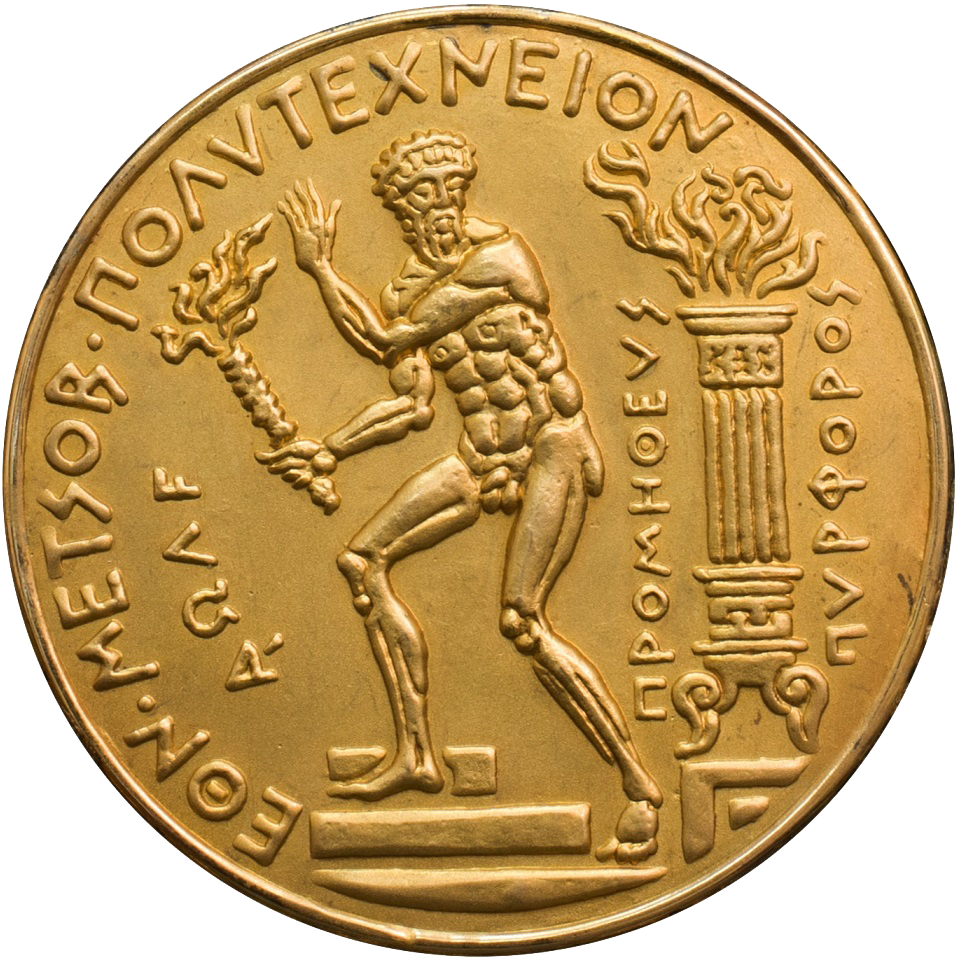INNOVATIVE MANUFACTURING ENGINEERING & ENERGY INTERNATIONAL CONFERENCE
The 24th edition of IManEE 2020 International Conference
December 14 – 15, 2020 online edition
„1st Virtual Edition in Manufacturing and Energy“
MODTECH / TMCR Renewed Series
National Technical University of Athens

NTUA was founded in 1836, a few years after Greece gained its independence. It is the oldest and most prestigious educational institution of Greece in the field of technology and has contributed unceasingly to the country’s scientific, technical and economic development. It is closely linked with Greece’s struggle for independence, democracy and social progress. In Greek, NTUA is called the National Metsovion Polytechnic. It was named “Metsovion” to honor the donors and benefactors Nikolaos Stournaris, Eleni Tositsa, Michail Tositsas and Georgios Averof, all from Metsovo, a small town in the region of Epirus, who made substantial donations in the last half of the 19th century.
NTUA was established by Royal Decree in 1836 with the purpose of training craftsmen, builders and master craftsmen. In 1840 due to its increasing popularity and the changing socio-economic conditions in the new state, it was upgraded to a daily Technical School.
In 1843 the School of Arts underwent its first major restructuring. Three departments were created: The part-time vocational school, the daily school and the Higher School of Fine Arts. It was then renamed as the “School of Industrial and Fine Arts”. The word “arts” was used for fine arts as well as engineering. This created a tradition as NTUA today includes a Department of Architecture and maintains close links with the School of Fine Arts, which has in the meantime become a separate independent establishment.
The School of Industrial and Fine Arts rapidly evolved towards a major higher education institution, a Technical University with a large number of students and a rich curriculum in scientific and professional courses. In 1873 it moved to its new “suburban campus” in Patission street (then in the outskirts of the capital) and was renamed (unofficially) as “Ethnicon Metsovion Polytechnion”.
NTUA took its present form in 1917 by special law that organized it into the Higher Schools of Civil Engineers, Mechanical & Electrical Engineers, Chemical Engineers, Surveying Engineers and Architecture. Up to the 1950s, NTUA was the only University in Greece offering degrees in engineering.
NTUA students were in the front line of popular struggles, with highlights the National Resistance under the German occupation (1941-44) and the more recent struggle against the Colonels’ dictatorship (1967-74). The Polytechnion Uprising of the 17th November 1973 is an outstanding event in recent Greek history. NTUA honored the victims of the Uprising with a monument within its courtyard, opposite the gate which the tanks of the dictatorship demolished that night.
Today, NTUA is divided into nine academic Schools, eight being for the engineering sciences, including architecture, and one for the general sciences. The personnel of the nine Faculties include more than 700 people as academic staff, 140 scientific assistants and 260 administrative and technical staff. The total number of NTUA employees is about 1350. The total number of undergraduate students is about 8500 and the graduate students 1500.
Furthermore, there are currently 19 Departmental or Inter-Departmental Postgraduate Courses, coordinated by N.T.U.A. Departments, leading to the respective “Post Graduate Specialisation Diploma”, with a minimum duration of 17 months. Moreover, N.T.U.A participates in 9 Post-graduate Programmes coordinated by other Greek Universities. After the acquisition of the “Post Graduate Specialisation Diploma”, the student can proceed towards submitting a Doctorate Thesis. The time required for the completion of a Ph.D. programme, including the eventual obtainment of a Postgraduate Diploma, ranges from a minimum of 3 years to a maximum of 6 years. There are approximately 60 Ph.D. nominations every year in the NTUA.
School of Mechanical Engineering
By 1914 the faculties included in NTUA were Civil Engineering, Mechanical Engineering, Architecture, Electrical Engineering and Telegraphic Engineering, all of them being four-year courses of highest educational level. In accordance with the law of 1914, lower level courses were removed to elementary education schools. In accordance with legislation passed on in 1917, the National Technical University of Athens included the Highest Department of Mechanical and Electrical Engineering and Highest Departments for Architects, Chemical Engineers and Surveyors. In the Department of Mechanical and Electrical Engineering new courses were inserted and new laboratories were set up. The courses offered were all obligatory but in 1960 and thereafter the department was divided into specialized sections. Thus in 1963, the division of Production Engineering was created and in 1968 the division of Naval Engineering.
Finally, in 1975, the Department of Mechanical and Electrical Engineering was divided into two independent departments. The Department of Mechanical Engineering included the divisions of Production Engineering and Naval Engineering. With the application of the Enabling Law of 1982, the Department of Mechanical Engineering includes the following six Sections:
– Section of Manufacturing Technology.
– Section of Industrial Management & Operational Research.
– Section of Thermal Engineering.
– Section of Mechanical Design & Automatic Control.
– Section of Nuclear Engineering.
– Section of Fluids.
The division of Naval Engineering was separated from the Department of Mechanical Engineering thus forming an independent Department. In 1986, the following two cycles of courses were created:
– The cycle for Energy Mechanical Engineers.
– The cycle for Constructions Mechanical Engineers.
In 1990 a cycle for Aircraft-Mechanical Engineers has been created. The above three cycles with a fourth cycle for Production Engineers provide to the students a freedom to select courses and choose the direction of their studies. There are laboratories for the training of the students and for research carried out by the teaching staff so as to satisfy the following three main requirements:
– Educational work, which includes teaching, tutorials, laboratory training, seminars and dissertations.
– Research and postgraduate studies (PhD) carried out in the six Sections of the School.
– Social work referring to the development of Technology and cooperation with Industrial, Public and private Institutions. In the following chapters more details are given about the educational and research activities of the School.
Manufacturing Technology Laboratory

The manufacturing Technology Laboratory (MTL) is part of the Section of Manufacturing Technology, School of Mechanical Engineering, National Technical University of Athens. The core staff includes:
- 4 Faculty Members
- 1 Special Teaching Member
- 1 Administrative/Technical Member
- 1 Special Technical and Laboratory Member
- 1 Administrative Member.
The Section of Manufacturing Technology of NTUA occupies 3200 m2 of laboratory space. In its premises there are two main floors with several machine tools and ten smaller rooms with machine tools, robots and measuring devices and systems, used for teaching and research activities.
The facilities of the lab include state-of-the-art machine tools such as CNC lathes and machining centers, grinding machines, a sinking EDM, 3D printers for additive manufacturing and plasma spray for coatings among others. Besides the aforementioned equipment, testing machines for tension/compression tests, bulge test and fatigue test, materials testing and inspection facilities with optical microscopes, Atomic Force Microscope (AFM), residual stresses hole drilling device, profilometer, micro-hardness measuring device, robots, 3D scanner, CMM and VR installations can be found in the laboratory. Furthermore, a fully equipped lab for the preparation, testing and processing of composite materials is installed within the laboratory of Manufacturing Technology. Additionally, the Laboratory of Manufacturing Technology possesses equipment and tools suitable for processing hard-to-machine materials, machining at high speeds and precision machining. Finally, special software for CAD/CAM systems, modelling and simulation can be found in the in the lab and are used in connection to the equipment and activities of the research of the team of the lab.

OUR SPONSORS























